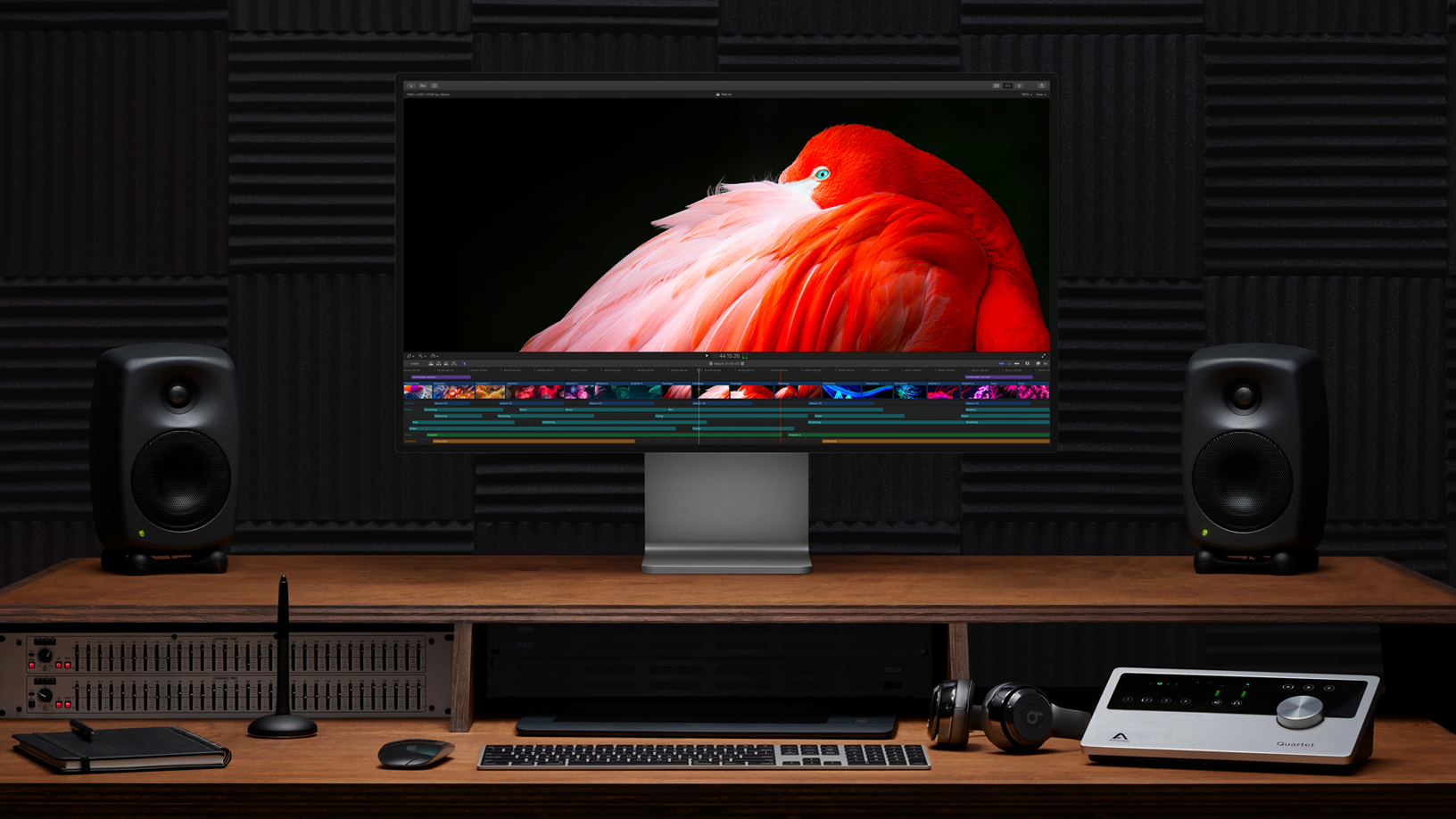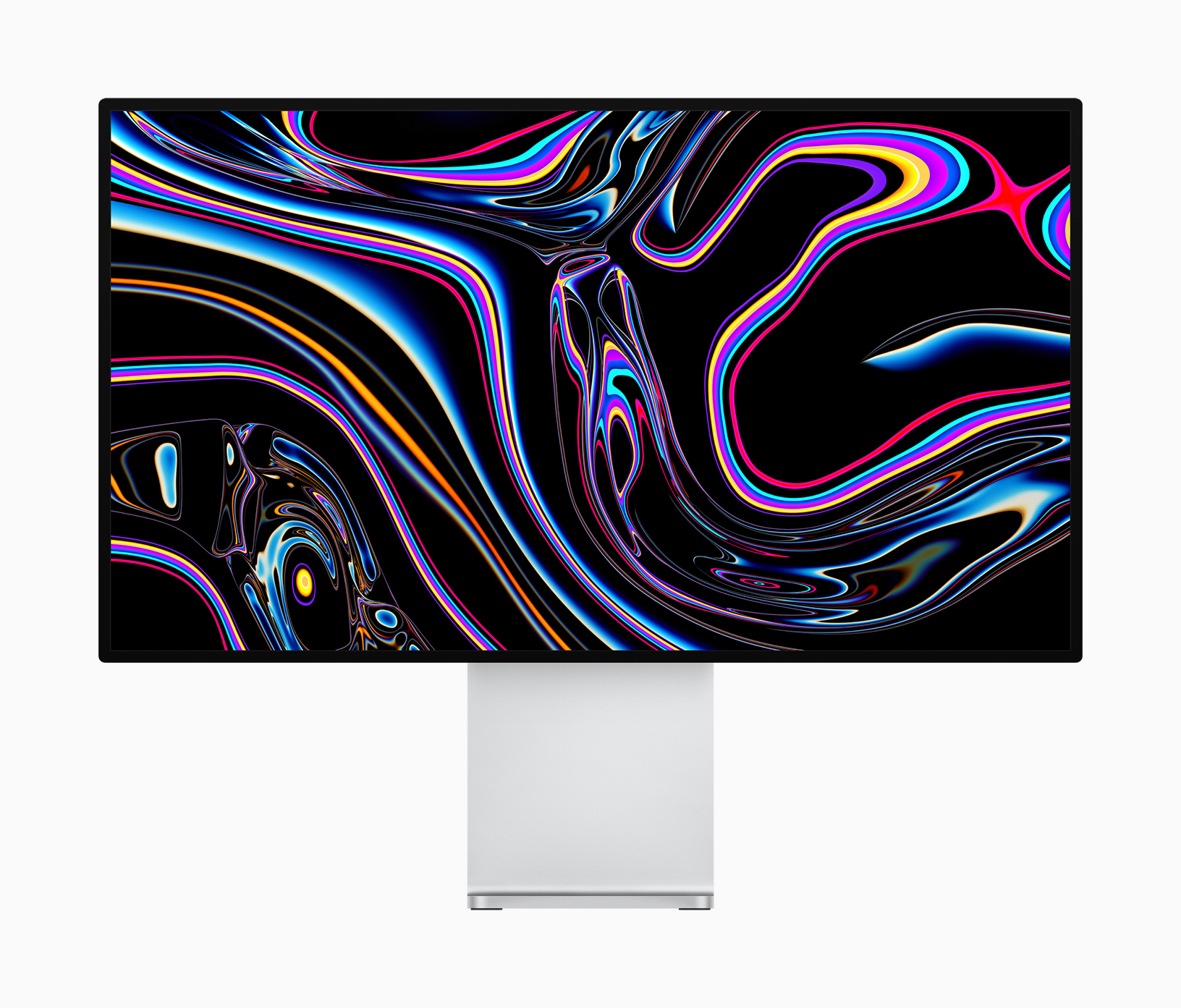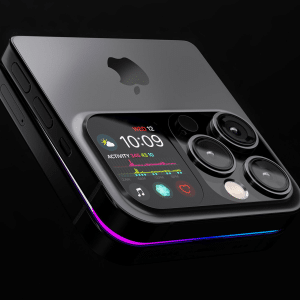With Apple set to start shipping the new Mac Pro and Pro Display XDR next month, we thought we’d take a closer look at one of the company’s most ambitious products to date.
A brief history
Though Apple stopped working on its own Apple-branded displays after the Thunderbolt Display, discontinued in 2016, the company knew that it would have to get back into the market if professional users were to take its new Mac Pro seriously.
For years, the company has been teasing an all-new professional desktop machine, following the 2013 ‘spaceship’ Mac Pro, and in May, the Cupertino firm lifted the lid on its most powerful computer yet.
Starting at $5,999, the machine features Xeon chips with up to 28 cores, configurable up to 1.5TB of memory, with eight PCIe expansion slots, up to two Radeon Pro II Duo GPUs and four total GPUS supported.
What’s more, the device sees the return of the iconic lattice design to offer better thermal regulation, and perhaps most impressively, the device is modular and fully upgradable, so professional users can invest once and upgrade as and when required.
Plugging in a basic monitor to this futuristic machine would be sacrilege, and so Apple also announced the “world’s best pro display,” priced at $4,999 and designed to compete with the professional reference displays with similar price tags, rather than desktop displays designed for home use purposes.
Reactions were mixed, though most have cottoned on to the fact that this display is not for everyday users. It offers superior levels of brightness, color accuracy, and contrast ratio for color grading and evaluation when working on photography or videography edits – perfect for high-end users.
Featuring a 32-inch 6K Retina display with a 6016 x 3384 resolution, the XDR offers more than 20 million pixels which offers a super-sharp, high-resolution viewing experience and more than 40% more screen real estate than a typical Retina 5K display, giving Apple an advantage over cheaper alternatives on the market.
This feat of engineering offers users “the world’s best pro display” and the perfect companion to the all-new Mac Pro. With Retina 6K resolution, gorgeous color, extreme brightness and contrast ratio, and highly functional design, Pro Display XDR delivers the most comprehensive set of features ever offered on a display at this price point,” said Phil Schiller, Apple’s senior VP of Worldwide Marketing.
Breathtaking design
Perhaps the most obvious difference between the Pro Display XDR and any other display Apple has released in the past is its size.
The XDR is the largest display in Apple history, measuring in at 32 inches diagonally with super slim 9mm bezels around the edge-to-edge display for a truly breathtaking design, with the same latticed aluminum design as the Mac Pro, cuts down on weight and increases airflow.
What’s more, the lattice serves as a heat sink, allowing the Pro Display XDR to maintain its brightness indefinitely.
Unlike on previous displays, the lattice design of the XDR more than doubles the surface area exposed to air, and inlet and exhaust vents draw in cool air and eject hot air away from the system.
And because the aluminum enclosure of the Pro Display XDR is just an inch thick, it offers a lightweight and portable user experience, weighing just 16.49 pounds.
Though clearly not as portable as an iMac or MacBook Pro, this 28.3-inch by 16.2-inch display can be carried easily between photography studios and film sets.
Standing proud
Where the Pro Display XDR really comes into its own is with the Apple-designed Pro Stand, which is available separately for an additional $999.
Though expensive and widely ridiculed online, the Stand provides –5° to +25° tilt and 120mm of height adjustment, as well as allowing users to rotate the Pro Display XDR into portrait mode, perfect for editing and transporting.
Indeed, the Pro Stand attaches and detaches easily using magnets so that the display can be taken on location, and an optional VESA mount adapter sold separately for $199 offers even greater flexibility.
When in its tallest position in landscape mode, the Pro Display XDR is 25.7 inches tall with the stand – it’s 21-inches in its lowest position and maxes out at 31.7-inches in portrait mode, offering ultimate flexibility for a whole host of circumstances.

Next-level display quality
The Pro Display XDR is a 6k display with a 6016 x 3384 resolution and more than 20 million pixels.
It has a P3 wide color gamut and true 10-bit color with over 1 billion colors, which offers professionals a true-to-life viewing experience for photo and video editing, whilst 218 pixels per inch means up to 40 percent more screen real estate than a Retina 5K display.
Apple has said that the Pro Display XDR features the “industry’s best polarizer technology for a superwide color-accurate off-axis viewing angle,” allowing multiple people to view more accurate content at the same time.
The Pro Display XDR was engineered to offer up to 25x better off-axis contrast than a typical LCD, great for studios or on-location when it’s critical that the right shots are captured first time, whether that’s filming a movie or on a photoshoot.
Professional users who spend a lot of time outdoors can optionally upgrade their Pro Display XDR with an anti-reflective coating that keeps reflected light from impacting the display for an additional $1,000.
This matte upgrade relies on nano-texture technology, cutting down on reflectivity and glare, rather than the standard coating process that scatters. Nano-texturing allows the display to maintain contrast whilst scattering light to reduce glare where possible.
Apple has also included True Tone on the Pro Display XDR, which takes advantage of Apple’s breakthrough dual ambient light sensor design. Apple has added a sensor to the back of the display and one at the front to adjust the display to ambient lighting, meaning a more advanced True Tone display that allows for greater color adjustments for viewing in all light conditions.
In fact, that’s what the XDR display is all about – XDR stands for Extreme Dynamic Range, with Apple taking brightness, color, and contrast to a “whole new level”.
What makes the display so special?
A unique backlighting system that’s capable of producing 1,000 nits of continual full-screen brightness and 1,600 nits of peak brightness, which vastly surpasses a standard display, which has a sustained brightness of around 350 nits. The XDR also has a 1,000,000:1 contrast ratio for bright highlights and dark blacks, cutting down on glow with LED technology, shaping, and intelligent image processing.
Will you be buying a Mac Pro and Pro Display XDR? Let us know your thoughts on social media and check back soon for more.









